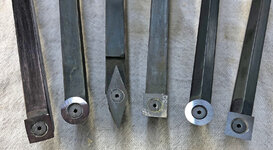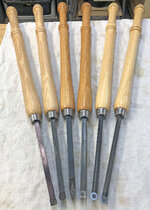sorcerertd
Member
I have been using carbide tools with round shafts. I find that I can adjust the cutter angle a little when I want to. Does anyone feel there is an advantage to using a square shaft? Is it better to always keep the cutter edge parallel with the workpiece?
FWIW, I feel pretty much the same about HSS skews. I don't typically hold them flat on the tool rest and that opens the door for those little dings in the tool rest surface.
FWIW, I feel pretty much the same about HSS skews. I don't typically hold them flat on the tool rest and that opens the door for those little dings in the tool rest surface.


